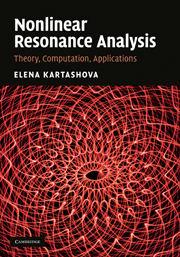Preface
Published online by Cambridge University Press: 06 December 2010
Summary
Description of the universe in the scientific paradigm is based on conceptions of action and reaction. The main question then is: What sort of reaction should be expected to this or that action? Qualitatively, it looks logical to expect a bigger reaction to a bigger action, and this is mostly the case. But nature is not to be put into the Procrustes bed of our logical schemes, and a remarkable exception exists – the phenomenon of resonance. Resonance was first described by Galileo Galilei in 1638: “one can confer motion upon even a heavy pendulum which is at rest by simply blowing against it; by repeating these blasts with a frequency which is the same as that of the pendulum one can impart considerable motion”.
Nowadays resonance is generally regarded as a red thread that runs through almost every branch of physics; without resonance we would not have radio, television, music, etc. Resonance causes an object to oscillate; sometimes the oscillation is easy to see (vibration of a guitar string), but sometimes this is impossible without measuring instruments (electrons in an electrical circuit). Soldiers are commanded to break step while marching over a bridge, otherwise the bridge may collapse.
Probably the most well-documented example of the resonance of a bridge is given by Tacoma Narrows Bridge, which was the third longest suspension bridge in the world in 1940.
- Type
- Chapter
- Information
- Nonlinear Resonance AnalysisTheory, Computation, Applications, pp. ix - xiiiPublisher: Cambridge University PressPrint publication year: 2010



